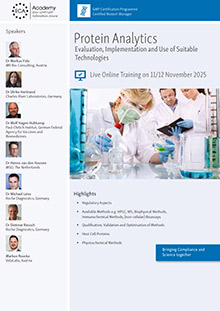WHO publishes Draft on Revised Process Validation Guideline: Validation Life-Cycle Required

Recommendation
5/6 February 2026
The WHO has published a proposal for the revision of its supplementary guideline on GMP validation (Annex 7: non-sterile process validation). The document contains 11 pages divided in:
1. Background and scope
2. Glossary
3. Introduction
4. Phase I. Process design
5. Phase II. Qualification and process verification
6. Phase III. Continued Process verification
7. Change control
References
The chapter "Background and scope" begins with pointing out how helpful quality risk management principles are in the process validation. Moreover, it is said that life-cycle approach has become the focus of process validation. Besides, a risk based approach is recommended - ideally linked to process controls (in-line or on-line) and to monitoring to ensure that a process is in a "state of control".
The introduction presents a pretty modern definition of process validation. The draft is based on the FDA's definition. Risk assessment - also based on a matrix approach which may be acceptable - is expressly mentioned. Traditional (prospective, concurrent but not retrospective) and continuous "process performance verification" are named as validation approaches. A combination of both is also acceptable - but without definition of "how". Chapter 3 already describes a validation life-cycle in 3 phases - whereby one of these phases is divided into 2 sub-phases:
Phase I Process design
Phase II Qualification and process verification
Phase IIA Qualification
Phase IIB "Continuous process performance verification"
Phase III Continued process verification
Now, with Phase IIB a new notion of "continuous process performance verification" has appeared in the field of validation.
Chapter 4 on Phase I (Process design) mentions that some process validation studies may be conducted on pilot-scale batches (corresponding to at least 10% or 100 000 units whichever is the greater). The batch size should be based on production scale. The magic number "3" is given as the minimum number of validation runs, depending on the complexity of the process. A justification for the number of validation batches used should be included. In addition, details regarding the content of a validation plan are also named.
Chapter 5 on qualification describes the classical DQ, IQ, OQ, PQ stages in case of a traditional approach. Alternative approaches - outside a traditional one - are described as applicable without further explanations. Process validation conducted concurrently with performance qualification is presented as applicable too. Chapter 5 also provides the descriptions of Phase IIB "continuous process performance verification", abbreviated CPV, a kind of unfortunate abbreviation. The rest of the text then only mentions "continuous process verification". This Phase should demonstrate that the process that operates within the predefined specified parameters consistently produces a product which meets all its critical quality attributes. In a further step, it should be demonstrated that no "Scale-up" effects appear.
Phase III (continued process verification) should provide evidence that a "state of control" is maintained throughout the product life-cycle. During this phase, enhanced sampling and monitoring is recommended to help increased process understanding as part of continuous improvement. Process trends as well as a periodic "Review" should be collected and assessed. It is expressly mentioned that "continued process verification" (strangely abbreviated CdPV) should not be confused with product quality review. A table provides a summary of the "new validation approach".
The penultimate chapter on change control emphasizes its necessity. The chapter is divided into two paragraphs defining exemplary changes which are likely to require revalidation and those for which revalidation should be considered according a risb-based approach. The first category includes for example: changes in the equipment and transfer of processes. The second category includes: changes to SOPs or changes to cleaning and hygiene programmes, etc.
Comments to the draft can be sent until the end of May. The proposal can be found under Working document QAS/13.527: Proposal for revision of the Supplementary Guideline on Good Manufacturing Practices: Validation, Appendix 7: Non-sterile process validation - on the WHO website.
Conclusion: it is a great idea from the WHO to update its process validation guideline with regard to a validation life-cycle. After the USA, the step has also been taken by the Europeans. Nevertheless, the draft needs some clarification. Many parts remain vague. The document seems to be a fusion of FDA's validation guideline from 2011 and EMA's Draft on the Guideline on Process Validation. Both guidelines are to be found in the references together with the ICH Q8, 9 and 10. As a conclusion, clarification should be added to the new approach described in the document. For example: what does "alternative qualification approaches" means? How should a combination of traditional validation and "continuous process performance verification" look like? This question is one of the critics made in EMA's draft. The introduction of new notions (i.e.. continuous process performance verification) and abbreviations (CdPV) is more confusing than clarifying. Moreover, many requirements which are presented in the first phase (e.g. content of validation plans) should belong to the second one. A clearer organisation would be helpful.





